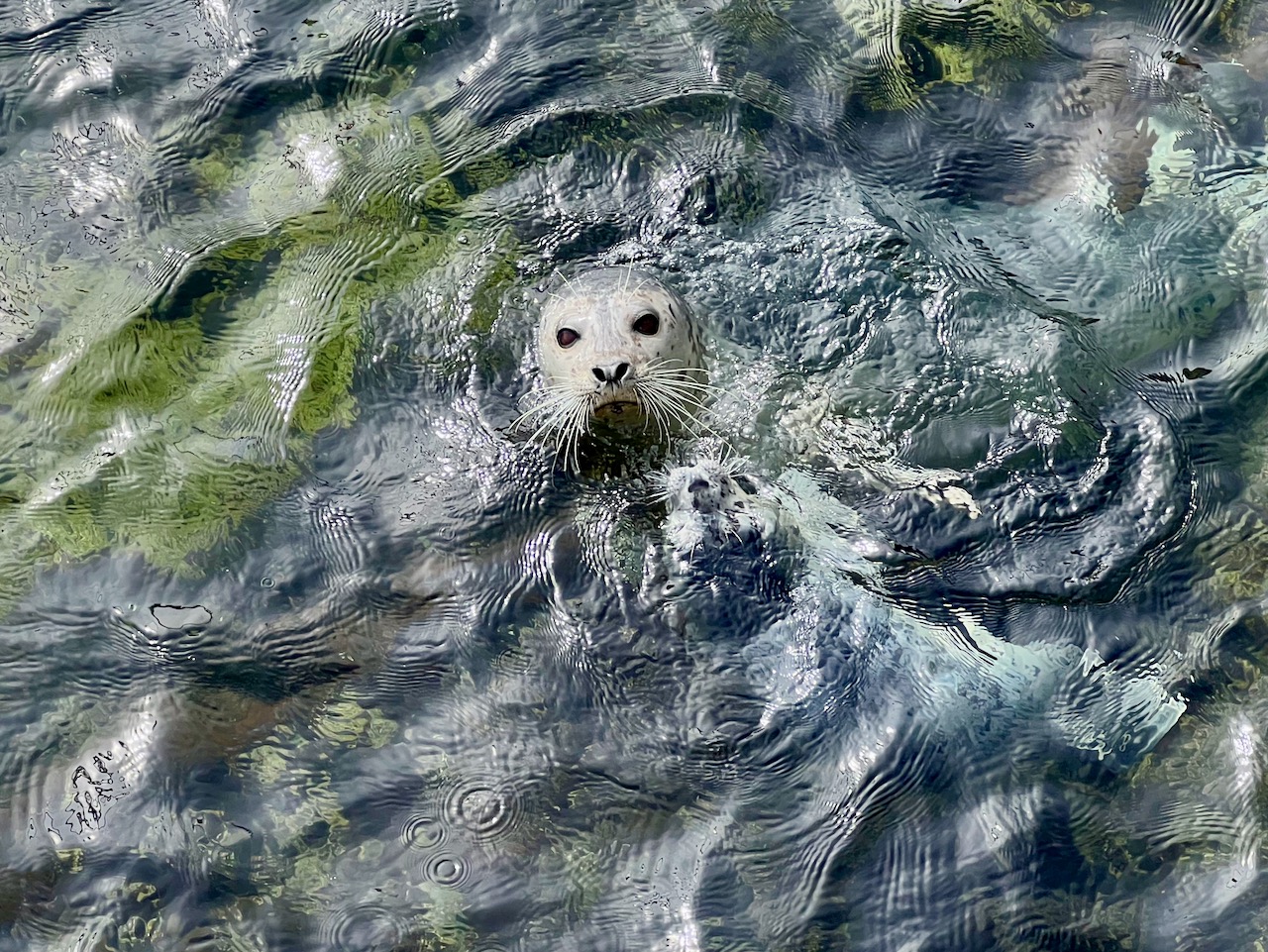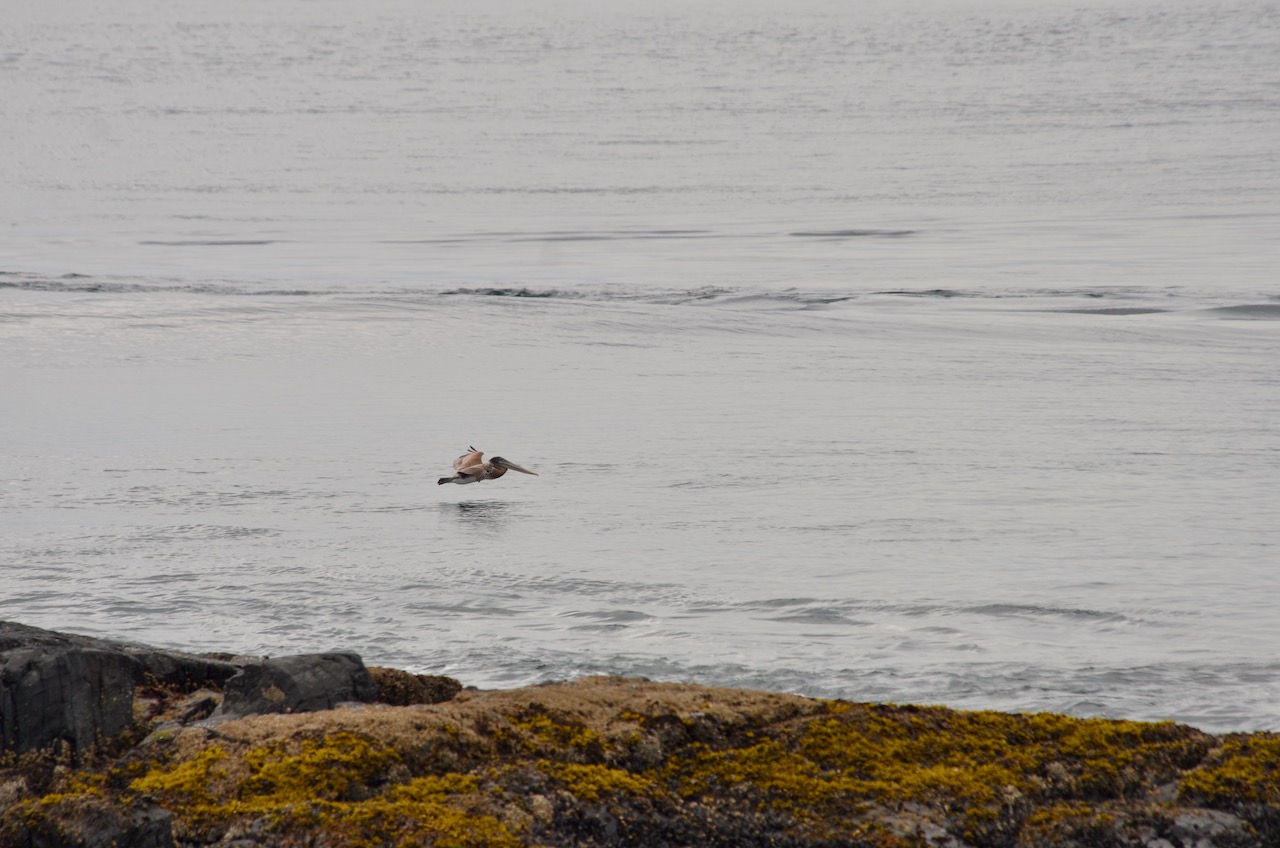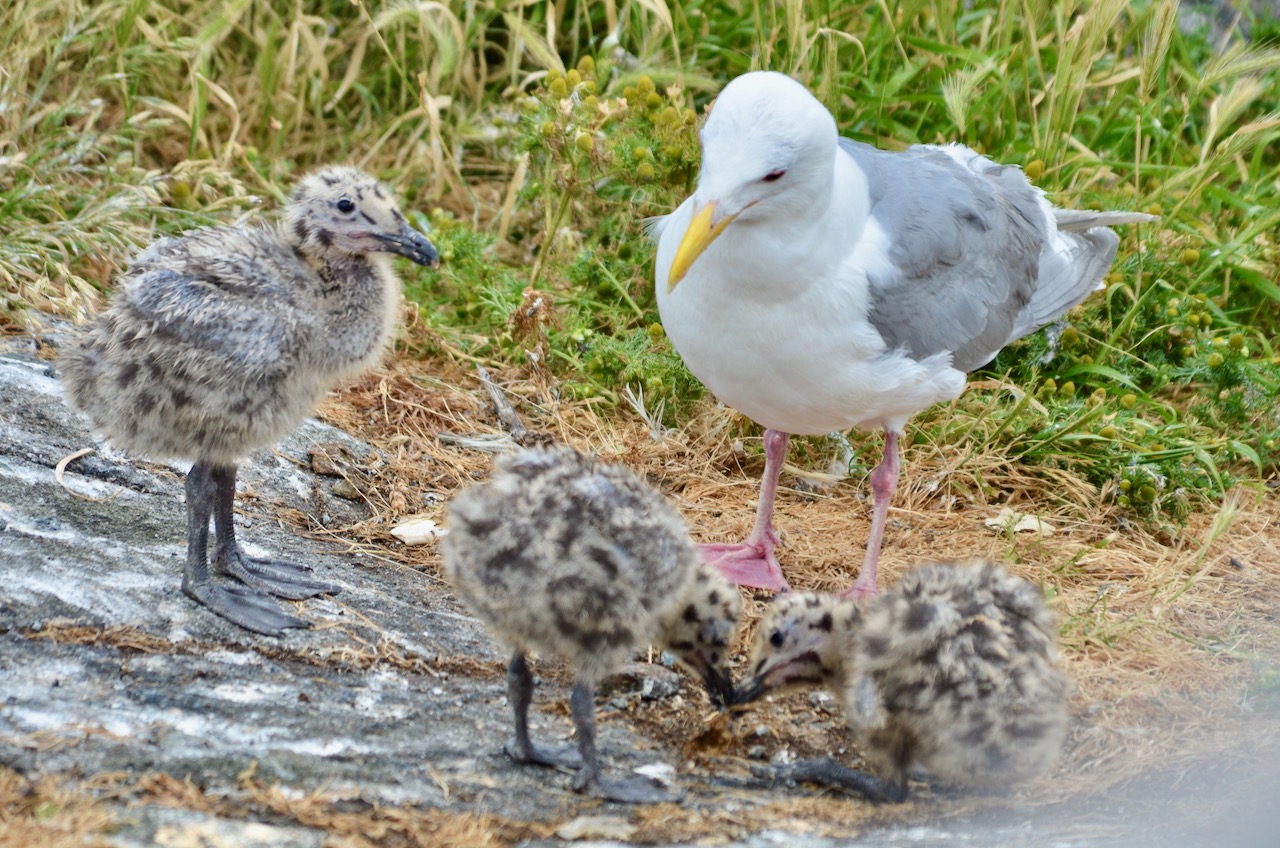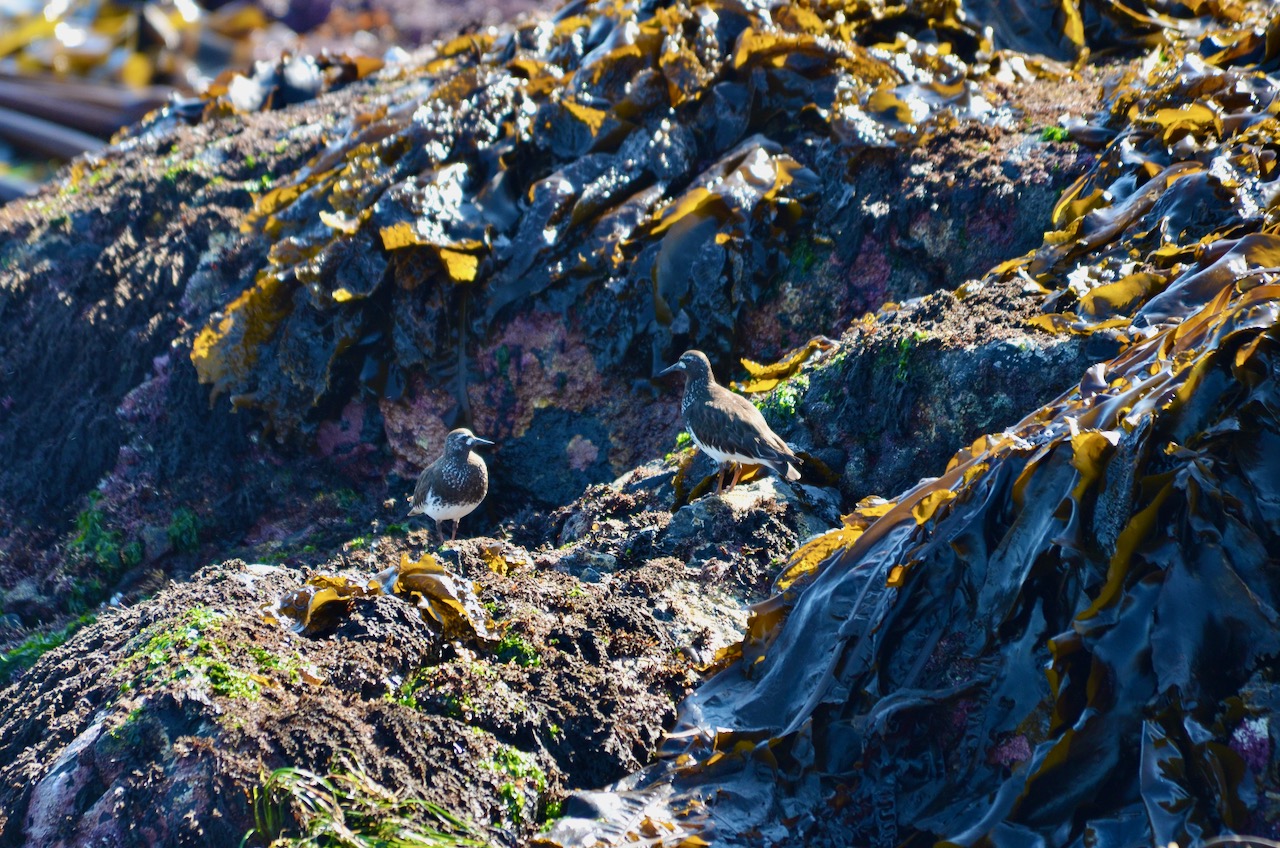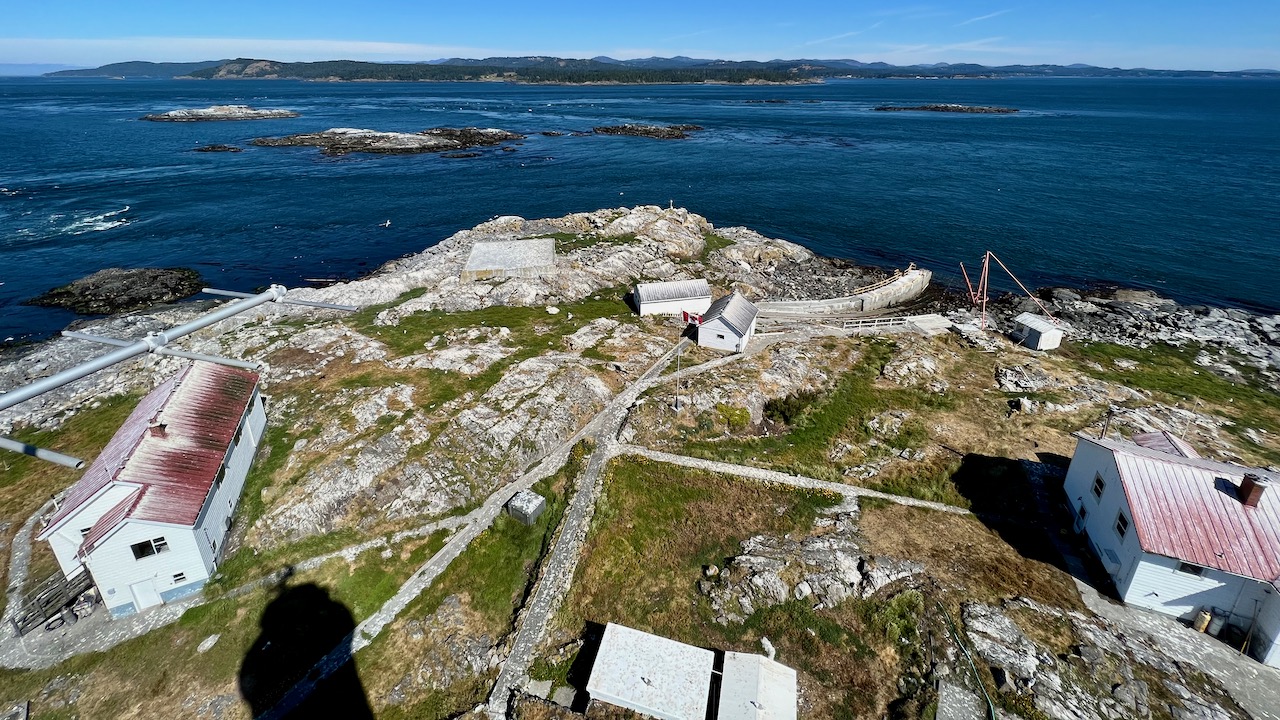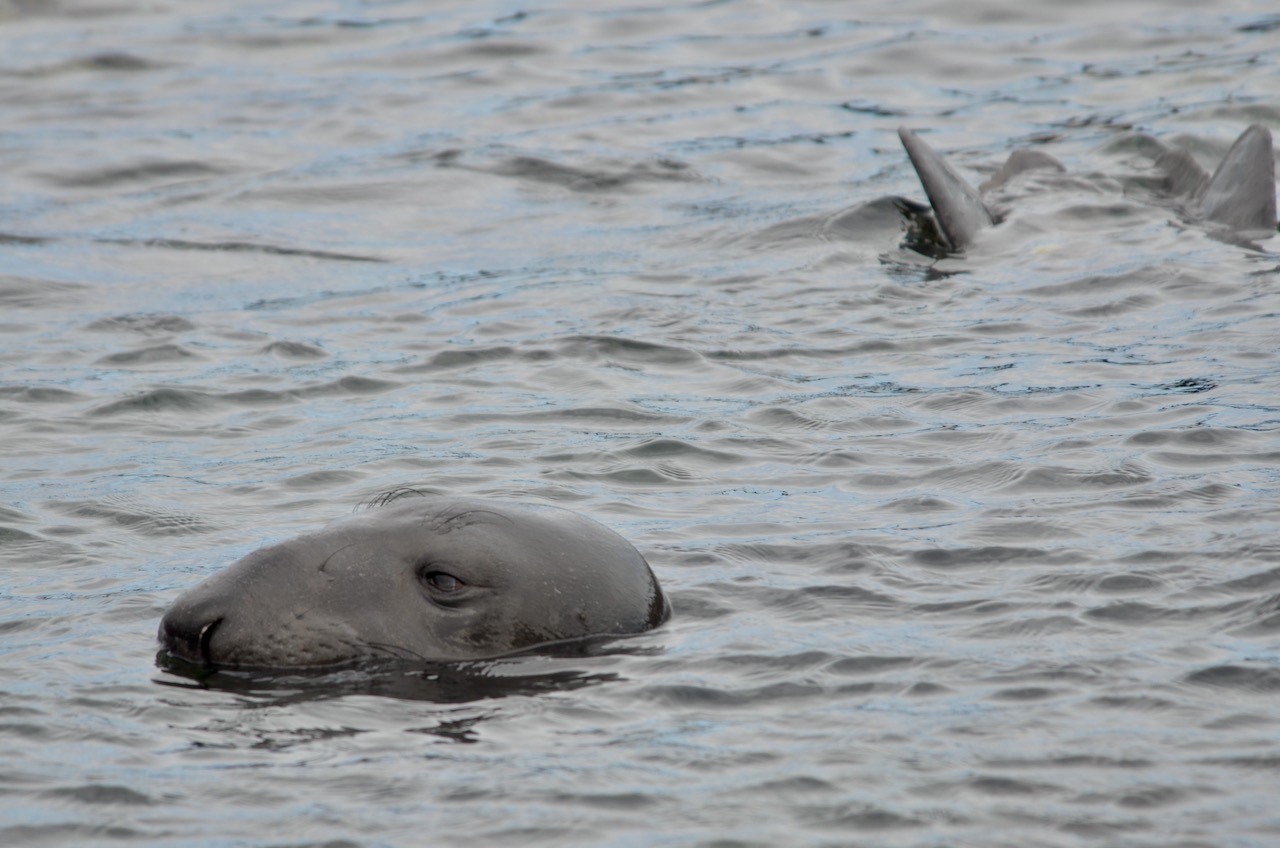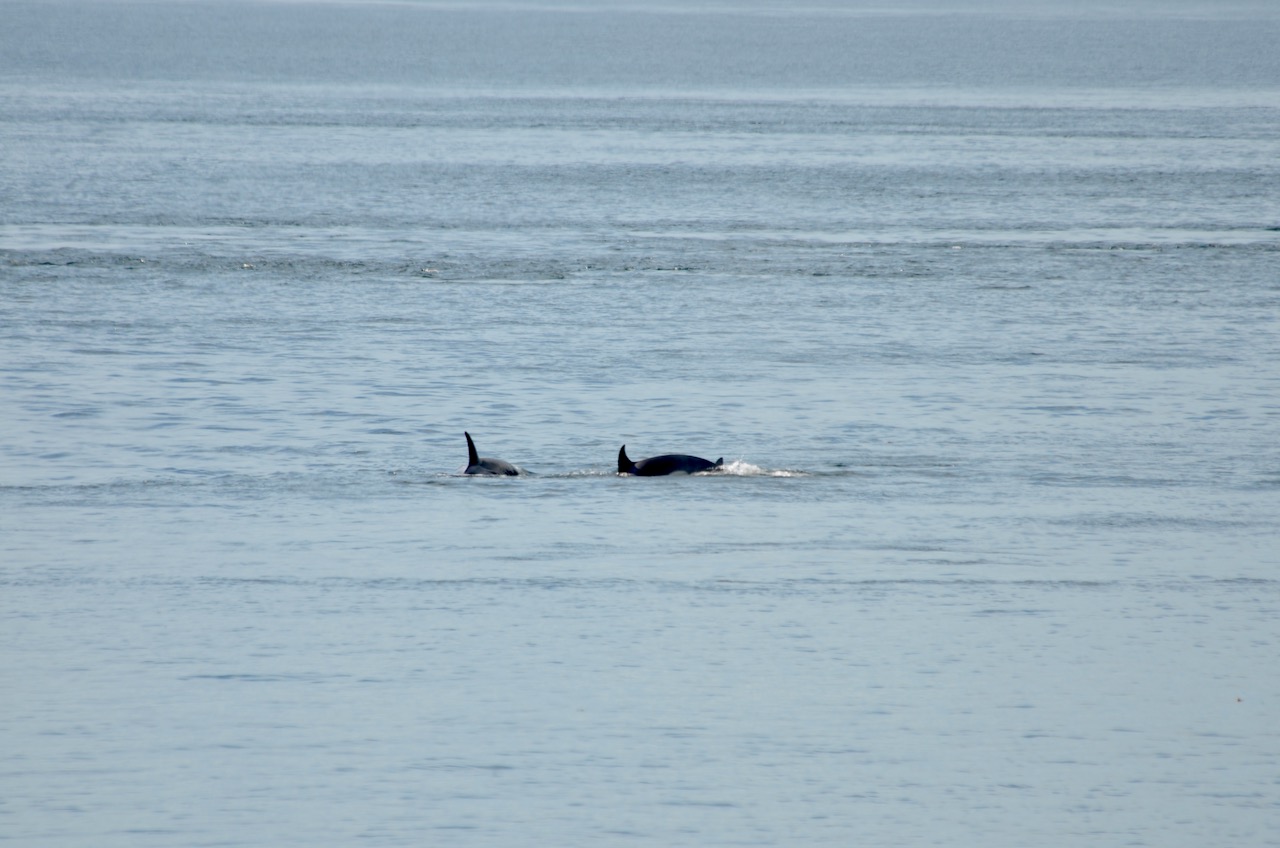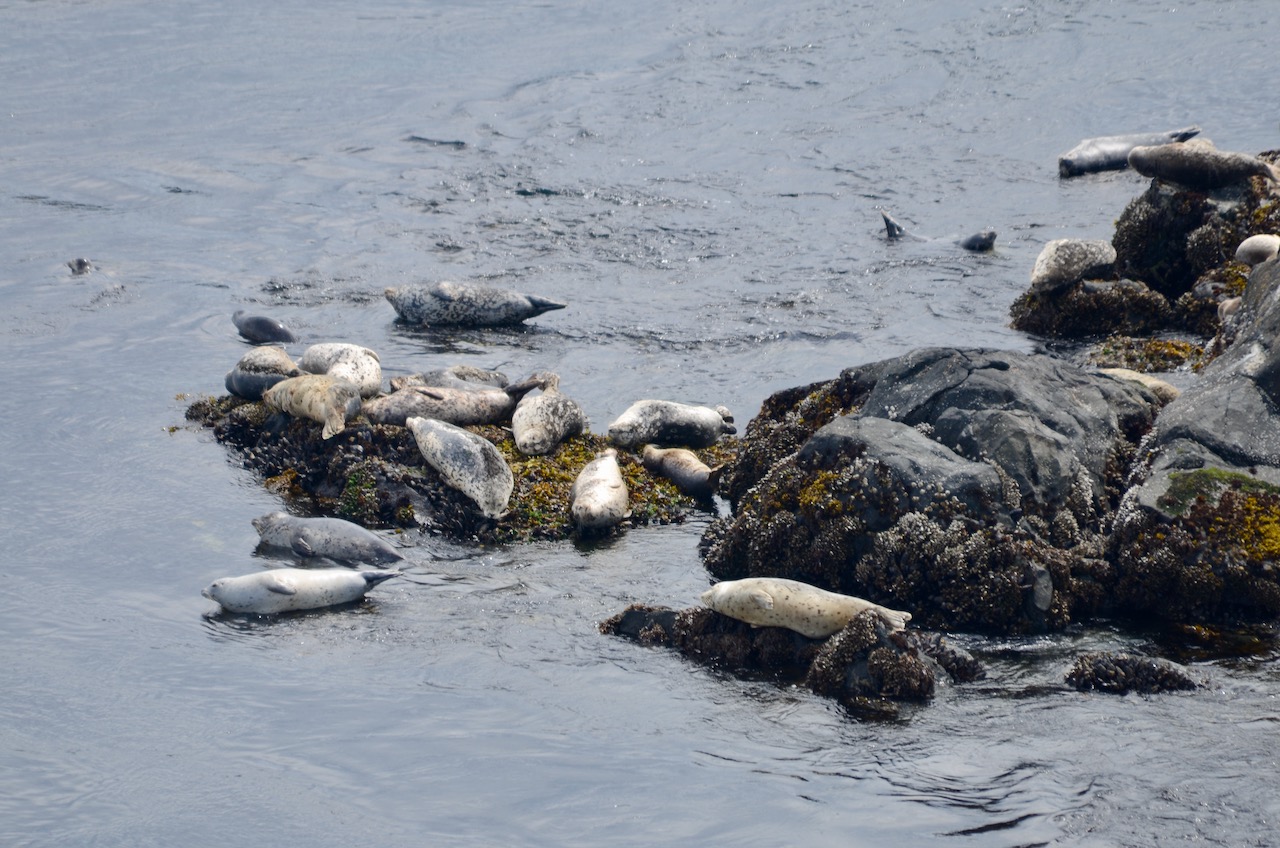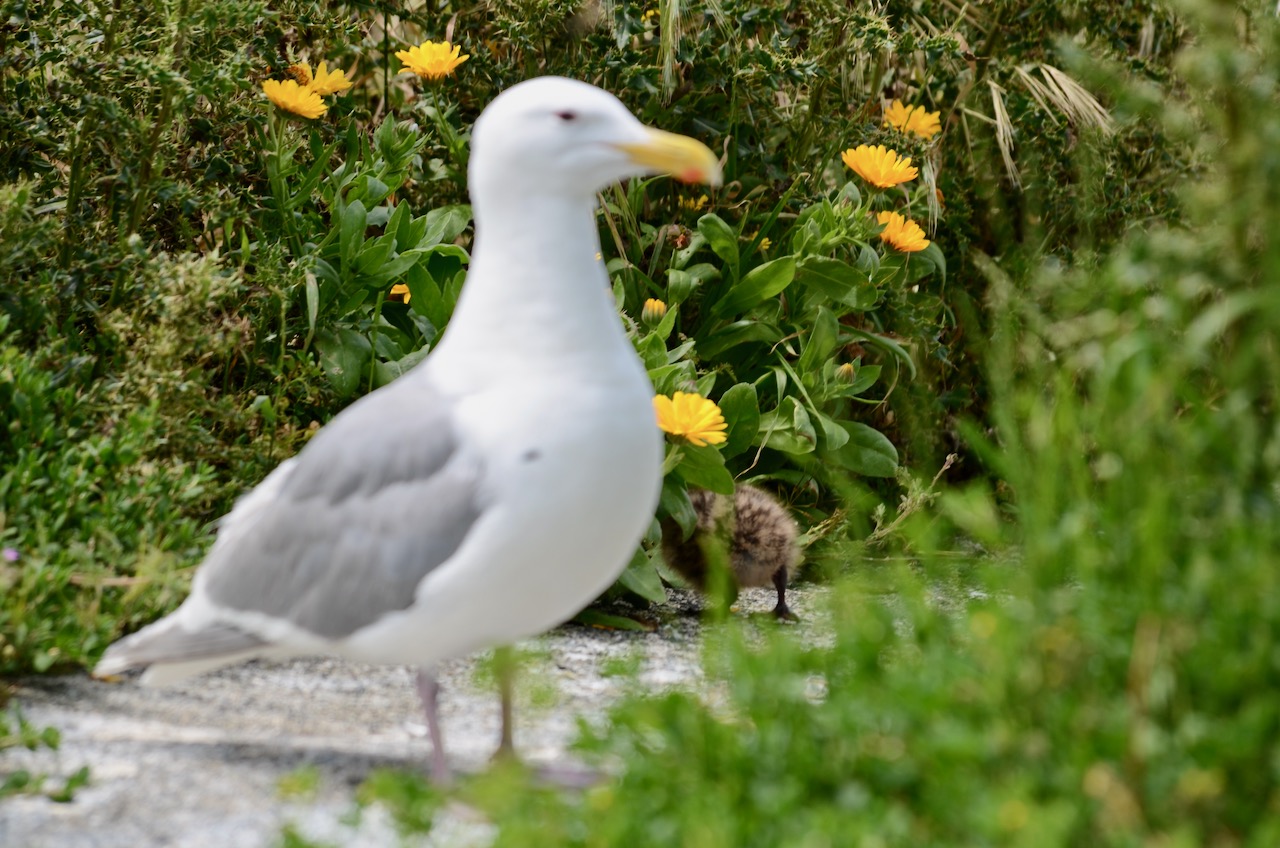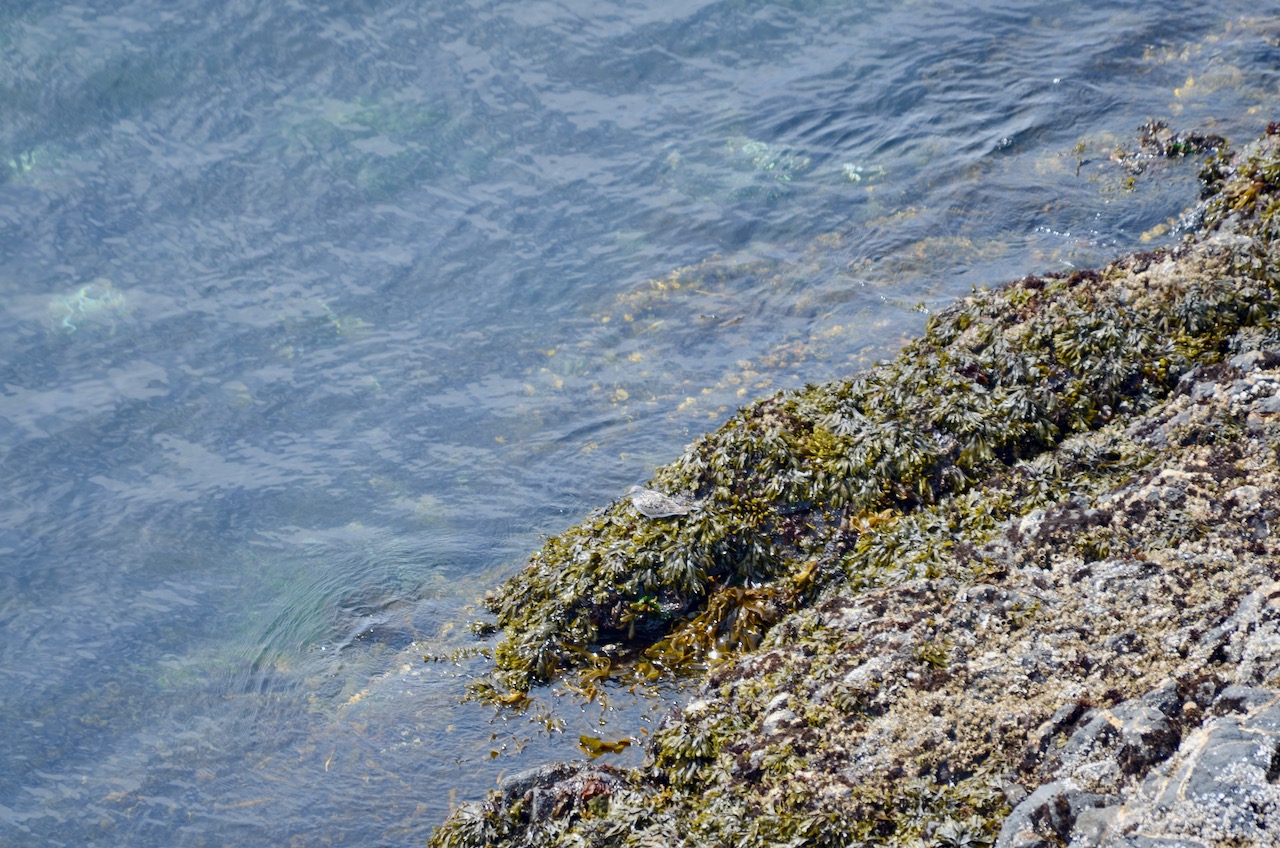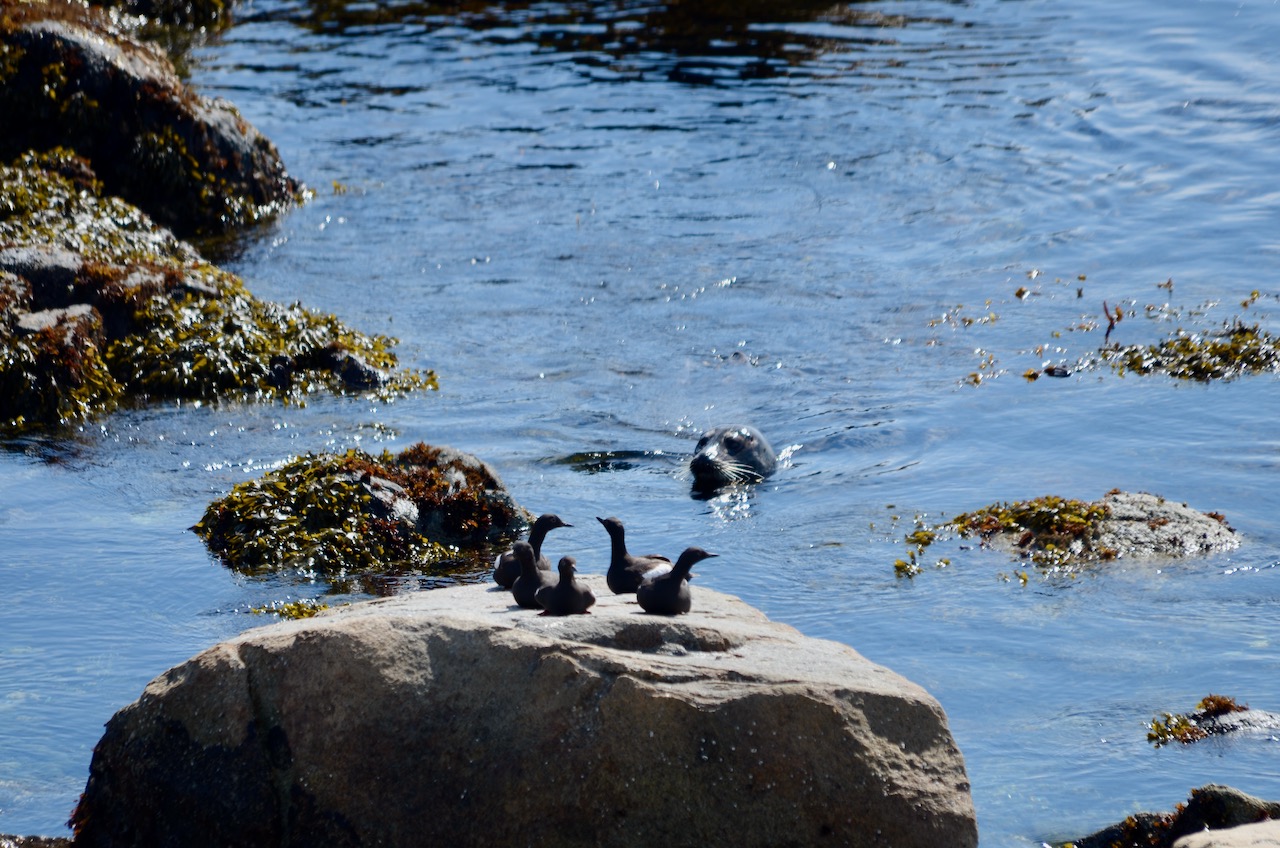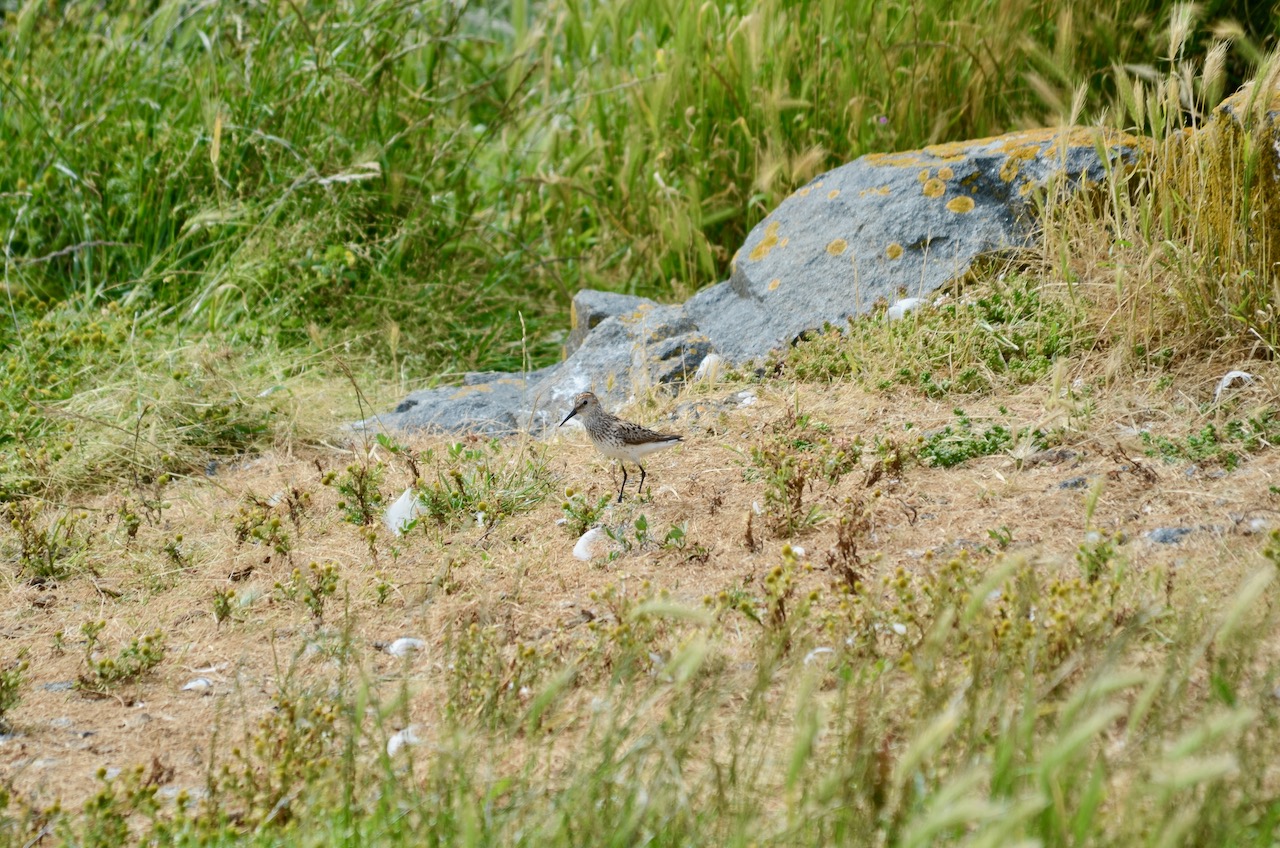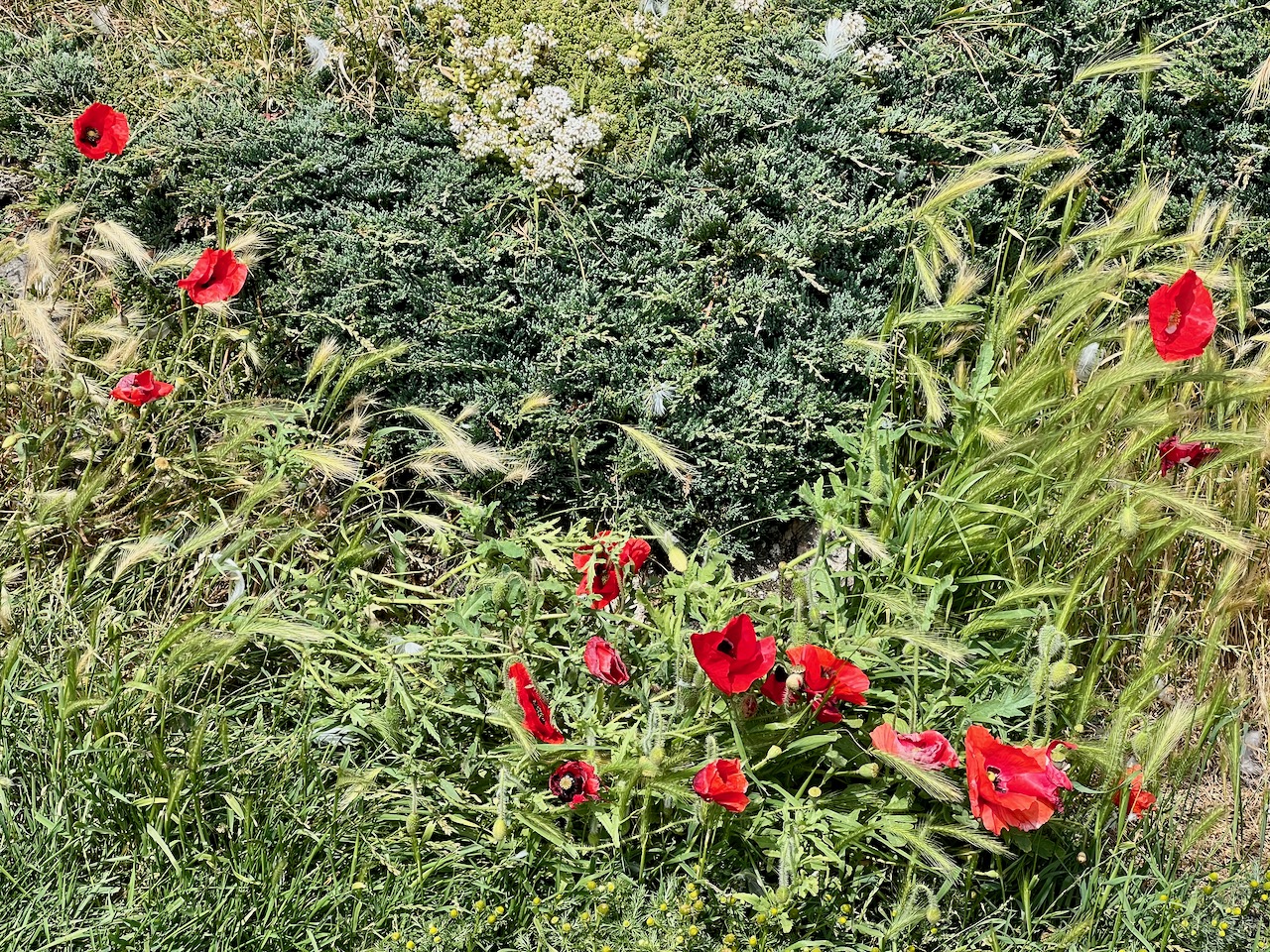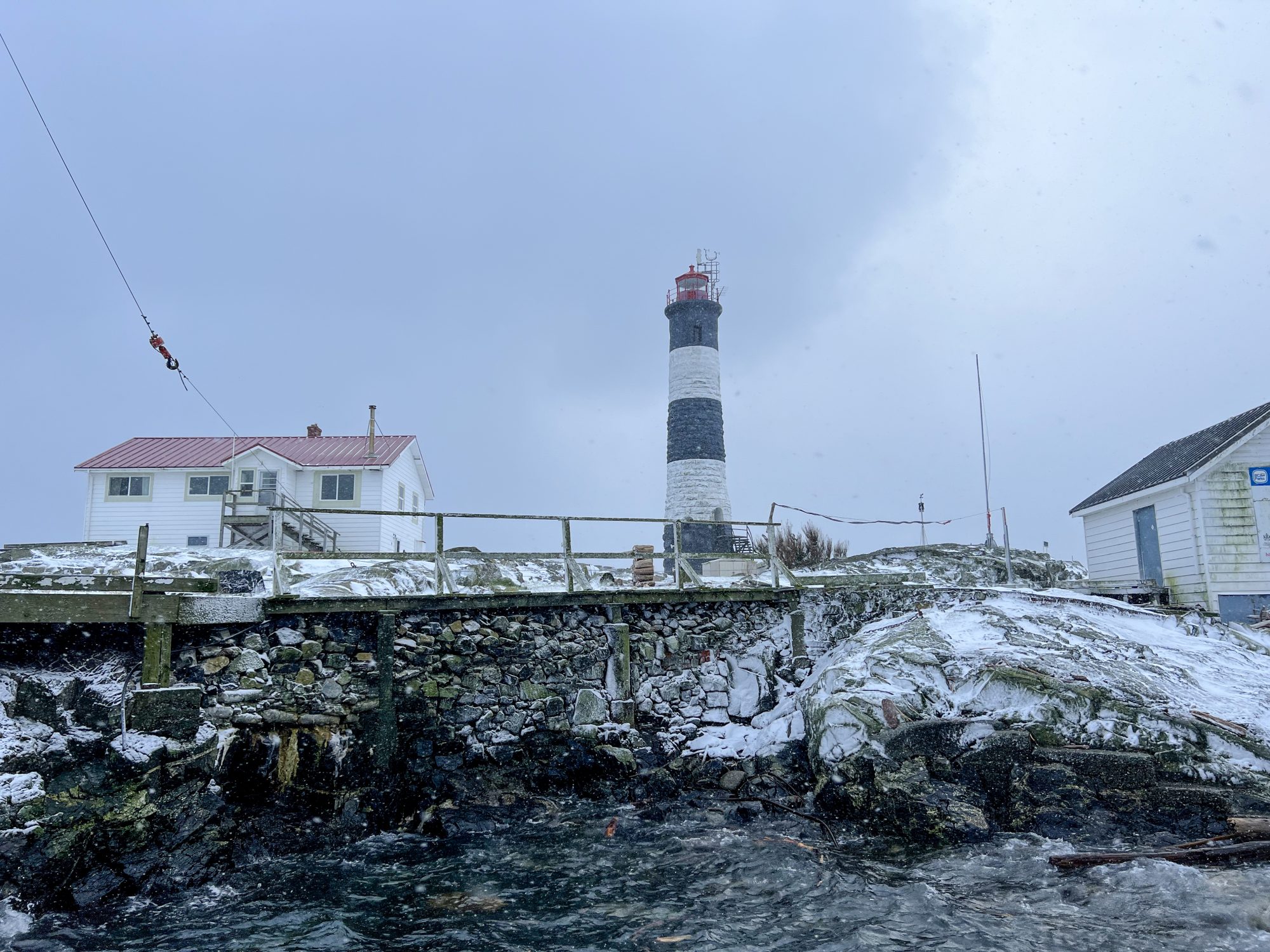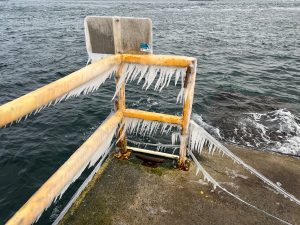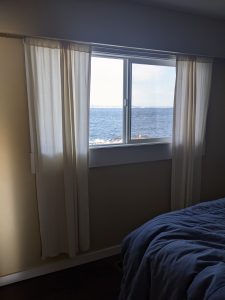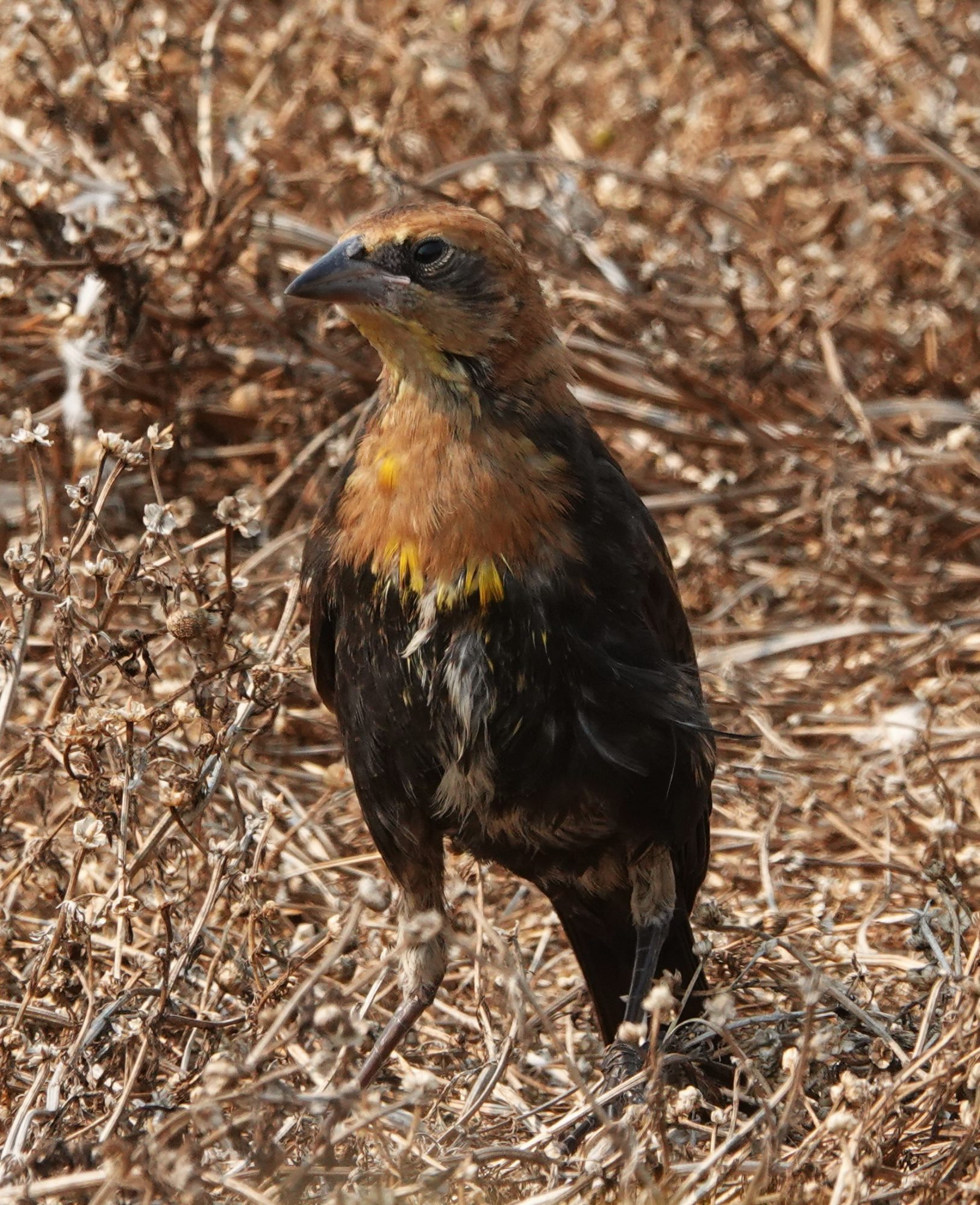Ecological Notes:
- A pod of humpbacks is still spending time to the southwest of the island. I spotted several last evening from the kitchen window while I was doing dinner dishes.
- There are now two female elephant seals near the boat ramp. They are similar size. The one who I first spotted today, has a bit lighter fur and more scars on her back, as compared to the other who has been around on and off for a few days.
- I have seen about 50 dead gull chicks around the island. There could be more in the areas I can not see. A few of the chicks have been ripped apart by a bird. I am not sure if it was an eagle or gull. Most of the dead chicks do not have any obvious signs of death, they are just lying in the grass near nests.
- See the photo gallery below for more ecological happenings from the past two days.
Weather:
- Yesterday (July 21):
- Sky: Fog overnight until mid-morning, partly cloudy for the rest of the day
- Wind: W 19-32 kts
- Sea: up to 2′ chop, low westerly swell
- Temperature Low 11 oC, High 14 oC
- Today (July 22):
- Sky: Partly Cloudy
- Wind: W 13-33 kts
- Sea: up to 3′ moderate
- Temperature Low 12 oC, High 15 oC
Visitors:
- No visitors
Facility Work:
- Cleaning solar panels, routine tidying and checking infrastructure around the island.
Vessel Traffic:
- Many Canadian and American ecotour boats have been nearby and heading through the waters of the ecological reserve.
Here are photo highlights from the past two days. Click on the photos for larger views and captions.
- A harbour seal mother and pup in the jetty bay. I spotted them as I was walking along the jetty to collect the seawater data yesterday morning.
- Another photo of the harbour seal mother and pup.
- The first California sea lion I have seen hauled out on Race Rocks in July. The current Steller sea lion haul out on Middle Rocks is in the foggy centre background of this photo.
- Humpback whale blows to the southwest, seen through the kitchen window.
- Two humpback whale blows and a dorsal fin on the left side.
- Humpback whale fluke
- Harbour seals hauled out on South Seal Rocks.
- Pigeon guillemots communicating on the south side.
- Can you spot the sea otter in the bull kelp off the east side? This photo was taken through the window of the lantern room.
- Two female elephant seals by the boat ramp. The one on the right, who is the more recent arrival, has lighter grey fur and more scars on her back. The other seal has been here on and off for the past few days.


